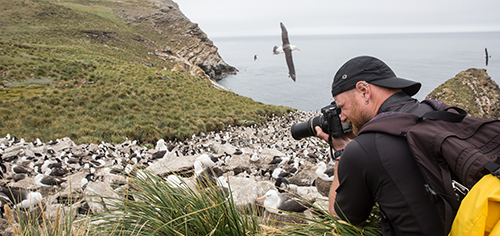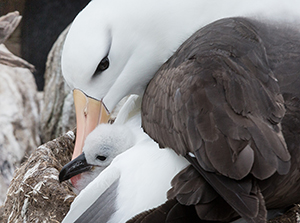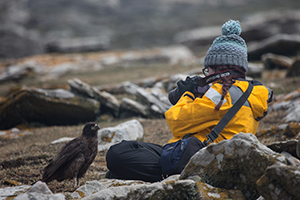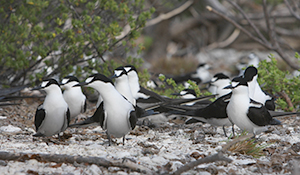South America
Natural Adventures
Nature travel and wildlife tours, with a side of
culture, to Peru, Colombia, Guyana, Ecuador & Galapagos, Costa
Rica, Honduras, Panama, Belize, Guatemela and more

South
Georgia to Cape Verde:
Secret Islands, Rare Birds, and Legendary Explorers
33
Days, 9 Remote Islands
FOR
NATURALISTS, BIRDERS AND HISTORIANS: THE ULTIMATE EXPEDITION

Quark
Expeditions and Nature Travel Specialist are excited excited to offer
this incredible new expedition that gives you the opportunity to visit
9 remote islands in the Atlantic, where exploration and both scientific
and world history were written many years ago.
Birders
and naturalists will be thrilled for the chance to travel alongside
well-known ornithologist Noah Strycker—who set a world record
for seeing 6,042 species of birds in one calendar year. As an on-board
ornithologist for expeditions to Antarctica and the high Arctic, Noah
has traveled to Earth’s polar regions more than 20 times and
is an expert on the birds of high latitudes.
On
this brand-new avian adventure across the Atlantic—sailing from
the far south, near the Antarctic Circle, to just off the northwest
coast of Africa—you’ll truly get away from it all, journeying
to volcanic islands that are so isolated and so rugged, many remain
inaccessible and uninhabitable to all but the most unique wildlife.
In addition to the staggering numbers
and kinds of birds and other wildlife, visit the grave of Antarctic
explorer Sir Ernest Shackleton and the house of the world's most famous
Exile, Napoleon Bonaparte
On this trip you’ll:
• Hike and explore some of most remote islands on the planet
— the Falklands, South Georgia, St Helena, Ascension Island
and Tristan de Cunha.
• See dozens of endemic bird species in their habitat and experience
incredible biodiversity unique to these islands.
• Absorb expert insights off-the-ship and onboard education
while traveling alongside ornithologist Noah Strycker.
• Explore historical sites and the fascinating stories of Ernest
Shackleton, Napoleon Bonaparte and Charles Darwin.
• Observe nesting green turtles in their natural habitat
• Visit both active and extinct volcanic islands that provide
insight into our planet’s past
• Explore the UNESCO World Heritage Site of Gough and Inaccessible
Islands
• Use Zodiacs to get up close to wildlife

ITINERARY
A full
itinerary is available in PDF form, please call or email for this
and more information. 861-251-2524
Day
1: Embark in Ushuaia, Argentina, sailing through the
Beagle Channel to the Atlantic Ocean.

Day 2: At sea, in one of the richest and most
diverse seabird areas on Earth.
Days 3 & 4: Exploring the Falkland Islands
from both an historical view but especially for the birds, including
Magellanic, Rockhopper and Gentoo Penguins, the endemic Cobb's
Wren and Falkland
Steamer Duck and Black-browed Albatross - 70% of the world's population
lives here.
 Days
5 & 6: At sea sailing to South Georgia. We sail through
the Antarctic Convergence with its abundance of krill. We'll be
looking for Humpback, Blue, Fin and Southern Right Whales, as
well Falkland Skuas, Thin-billed Prions and three species of petrels.
Days
5 & 6: At sea sailing to South Georgia. We sail through
the Antarctic Convergence with its abundance of krill. We'll be
looking for Humpback, Blue, Fin and Southern Right Whales, as
well Falkland Skuas, Thin-billed Prions and three species of petrels.
Days 7 & 8: We explore South Georgia over
these two days, including visiting the great Antarctic explorer
Sir Ernest Shackleton's grave. South Georgia is a wildlife mecca,
with, among others, Antarctic Fur and Elephant Seals, and King
and Gentoo Penguins, which can number in hundreds of thousands.

Days 9 to 13: At sea, continuing through pelagic-rich
waters as we head northeast toward Gough Island. While spending
deck time with Noah, the ships other naturalists and your fellow
birders there will also be expert presentations in the lounge.
As we begin to reach warmer waters new birds such as Sooty Albatross,
Spectacled Petrel and Great-winged Petrel should be starting to
appear.
 Days
14 to 17: Tristan de Cunha is our home for these three
days, with plenty of time to get some solid ground under our now-trained
sea legs and to experience life on the most remote town on Earth.
It's over 1500 miles to the nearest inhabited place, St Helena
Island. Zodiac expeditions will take us round the World Heritage
Site, Gough and Inaccessible Islands. We'll still see plenty of
birds, especially the cliff nesters as we motor close to the cliffs.
Species taking advantage of the islands' remoteness includes several
endemic species including Gough Bunting, Spectacled Petrel, Tristan
Albatross, Skua,
Days
14 to 17: Tristan de Cunha is our home for these three
days, with plenty of time to get some solid ground under our now-trained
sea legs and to experience life on the most remote town on Earth.
It's over 1500 miles to the nearest inhabited place, St Helena
Island. Zodiac expeditions will take us round the World Heritage
Site, Gough and Inaccessible Islands. We'll still see plenty of
birds, especially the cliff nesters as we motor close to the cliffs.
Species taking advantage of the islands' remoteness includes several
endemic species including Gough Bunting, Spectacled Petrel, Tristan
Albatross, Skua, Thrush and Bunting. A short distance from Tristan de Cunha is
Napoleon Island, where over a million seabirds breed, and home
to the endemic Nightingale Bunting.
Thrush and Bunting. A short distance from Tristan de Cunha is
Napoleon Island, where over a million seabirds breed, and home
to the endemic Nightingale Bunting.
Days 18 to 22: These are sea days as we head
north to St Helena Island. As with our other sea days birdwatching
from the deck, using the well-stocked library, presentations and
socializing with new-found friends will occupy our time.
Day 23: St Helena Island: The most famous inhabitant
of St Helena was of course Napoleon Bonaparte; he was exiled here
from 1815 to  his
death in 1821. We can explore his residence among other historic
places. For birders, the endemic St Helena Plover will be a must,
and for all saying hello to Jonathon, a land tortoise credited
with being, at 184 years, the oldest living land animal.
his
death in 1821. We can explore his residence among other historic
places. For birders, the endemic St Helena Plover will be a must,
and for all saying hello to Jonathon, a land tortoise credited
with being, at 184 years, the oldest living land animal.
Days 24 & 25: At sea visiting smaller islands.
Madeiran Storm-petrel and Bulwer's Petrel and two of our target
birds along this stretch.
Days 26 & 27: Ascension and Boatswain Bird
Islands occupy the two days. Ascension is a volcanic landscape,
mostly lava flows and cinder cones. But there are beaches tucked
away, and one in the small capital Georgetown is a breeding beach
for thousands of Green Turtles. We will make excursions to this
beach to catch the egg laying. In addition to the turtles Ascension
is home to 400,000 birds of 11 species, including the endemi c
Ascension Frigatebird. Weather permitting we'll visit the frigatebirds
breeding island, Boatswain Bird, where we'll also look for Sooty
Terns, Masked and Brown Boobies, Black and Brown Noddies, and,
naturally the Boatswain Birds themselves, White-tailed Tropicbirds.
c
Ascension Frigatebird. Weather permitting we'll visit the frigatebirds
breeding island, Boatswain Bird, where we'll also look for Sooty
Terns, Masked and Brown Boobies, Black and Brown Noddies, and,
naturally the Boatswain Birds themselves, White-tailed Tropicbirds.
Days 28 to 32: At sea sailing north to Cape Verde
Island, some 310 miles off the coast of Senegal. In these warmer
waters the sheer numbers of birds diminishes, but there are still
plenty around, plus pods of dolphins and whales, and with luck
interesting fish such as the peculiar Mola Mola. Closer to Cape
Verde we'll especially be looking out for Cape Verde Shearwater,
which only breeds here.
Day
33: We disembark this morning at Cape Verde, saying farewell
to new, but now seeming old, friends. Some will fly back to their
homes today, others will spend a day or two exploring Cape Verde.

Please remember this is expedition
travel to remote areas where weather, ice and other factors can influence
the trip. The itinerary is what is planned, but unexpected conditions
may cause changes. Quark has been running cruises in Antarctic and
sub-Antarctic waters for many years, and has considerable experience
in making changes that maintain the integrity, value and wildlife
richness of their sailings.
Included are all shipboard activities,
excursions, meals and snacks (alcoholic and soft beverages are not
included), in cabin hair dryer and bathrobes, service fees and port
charges, luggage handling on board, and up to $100,000 of emergency
evacuation insurance. Our group will travel in our own Zodiac on excursion
with our own assigned leader.
Nature Travel Specialists has arranged
special discounted fares for this journey. Also included in these
special fares is a Quark parka, especially designed and built for
Quark using their 25 years of Polar exploration experience, normally
available for purchase on board for $350. A range of cabins is available,
please call or email for more information.










 Days
5 & 6: At sea sailing to South Georgia. We sail through
the Antarctic Convergence with its abundance of krill. We'll be
looking for Humpback, Blue, Fin and Southern Right Whales, as
well Falkland Skuas, Thin-billed Prions and three species of petrels.
Days
5 & 6: At sea sailing to South Georgia. We sail through
the Antarctic Convergence with its abundance of krill. We'll be
looking for Humpback, Blue, Fin and Southern Right Whales, as
well Falkland Skuas, Thin-billed Prions and three species of petrels.
 Days
14 to 17: Tristan de Cunha is our home for these three
days, with plenty of time to get some solid ground under our now-trained
sea legs and to experience life on the most remote town on Earth.
It's over 1500 miles to the nearest inhabited place, St Helena
Island. Zodiac expeditions will take us round the World Heritage
Site, Gough and Inaccessible Islands. We'll still see plenty of
birds, especially the cliff nesters as we motor close to the cliffs.
Species taking advantage of the islands' remoteness includes several
endemic species including Gough Bunting, Spectacled Petrel, Tristan
Albatross, Skua,
Days
14 to 17: Tristan de Cunha is our home for these three
days, with plenty of time to get some solid ground under our now-trained
sea legs and to experience life on the most remote town on Earth.
It's over 1500 miles to the nearest inhabited place, St Helena
Island. Zodiac expeditions will take us round the World Heritage
Site, Gough and Inaccessible Islands. We'll still see plenty of
birds, especially the cliff nesters as we motor close to the cliffs.
Species taking advantage of the islands' remoteness includes several
endemic species including Gough Bunting, Spectacled Petrel, Tristan
Albatross, Skua, Thrush and Bunting. A short distance from Tristan de Cunha is
Napoleon Island, where over a million seabirds breed, and home
to the endemic Nightingale Bunting.
Thrush and Bunting. A short distance from Tristan de Cunha is
Napoleon Island, where over a million seabirds breed, and home
to the endemic Nightingale Bunting. his
death in 1821. We can explore his residence among other historic
places. For birders, the endemic St Helena Plover will be a must,
and for all saying hello to Jonathon, a land tortoise credited
with being, at 184 years, the oldest living land animal.
his
death in 1821. We can explore his residence among other historic
places. For birders, the endemic St Helena Plover will be a must,
and for all saying hello to Jonathon, a land tortoise credited
with being, at 184 years, the oldest living land animal. c
Ascension Frigatebird. Weather permitting we'll visit the frigatebirds
breeding island, Boatswain Bird, where we'll also look for Sooty
Terns, Masked and Brown Boobies, Black and Brown Noddies, and,
naturally the Boatswain Birds themselves, White-tailed Tropicbirds.
c
Ascension Frigatebird. Weather permitting we'll visit the frigatebirds
breeding island, Boatswain Bird, where we'll also look for Sooty
Terns, Masked and Brown Boobies, Black and Brown Noddies, and,
naturally the Boatswain Birds themselves, White-tailed Tropicbirds.
